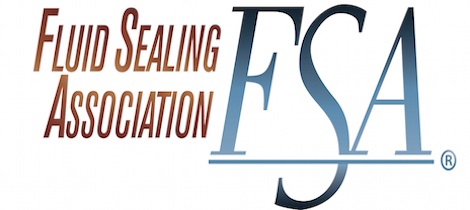Hidden from consumers and throughout industrial plants are sealing devices. Sealing devices prevent pollutants from escaping into the atmosphereand keep people safe. They are a “must-have” technologydesigned for a variety of systems in use to keep the world operating as we know it. The Fluid Sealing Association brings competing fluid sealing manufacturers together to collaborate on common issues facing the sealing industry. The process requires “technical diplomacy” to develop consensus. What are some of the current issues the sealing industry faces?
Environmental issues. When the Clean Air Act was signed into law in 1970 and amended in 1990, it had a great impact on industry in that the emissions for equipment using sealing products were going to be more strictly regulated. Though emissions of the six principal air pollutants have decreased by more than 41 percent over the last 20 years (http://www.epa.gov/air/caa/40th.html), new regulations are being imposed that require emissions to decrease even further, creating demand for manufacturers to produce sealing products that meet these requirements as well as support sustainability. Sustainability means maintaining our natural resources, so it is critical to develop sealing products foreffective pollution control while also conserving water, reducing greenhouse gases, and conserving energy.
Training and Education. You cannot simply install a sealing device and expect it to work. Whatever the sealing products are, whether a mechanical seal, a compression packing or a gasket in a pump, they only work if correctly installed and properly maintained. A principal driver and mission of the Fluid Sealing Association is to deliver effective training and education to a cross-generational workforce. With so many generations in the workplace today, the medium by which training is delivered needs to be differentiated for increased accessibility. Because modern technology continues to provide new learning opportunities, the Fluid Sealing Association is utilizing a variety of media to deliver effective training and education; theseinclude newsletters, technical publications, white papers, knowledge bases, social media, and webinars that are developedwith a consensus approach from the sealing industry.
Proliferation of Standards. The United States, Europe and Japan all have their own standards, which present real challenges to the global end-user. Companies that work to meet the different standards issued by different associations spend a great deal of money, time, and effort to meet these standards – which are often redundant. The world doesn’t need redundant standards. The real goal should be “harmonization”. How can we address this issue of redundant standards? One action to address this is to work closer with user groups. The Fluid Sealing Association has been working with a number of user groups including: FLMUG (Fluid Leak Management Users Group) which is comprised of engineers and technicians in the nuclear power generation industry and the PVRC-SRC (Pressure Vessel Research Council – Sealing Reliability Council). It also has a very close relationship with the ESA (European Sealing Association) which has a membership comprised primarily ofEuropean-based companies. The European Sealing Association and the Fluid Sealing Association work closely onparticipation in the development of harmonized standards, sharing research efforts and jointly published materials to eliminate the redundancy and to improve progress in all these areas.
While you are making efforts to prevent leaks, take advantage of knowledge and experience provided by the Fluid Sealing Association and other industry groups that are providing training and education resources to help you prevent leaks. Closer involvement with this community will create a vehicle by which we can get the important information to the people who need it and use it to effectively install and maintain their sealing devices.
For more information about the Fluid Sealing Association, please visit http://www.fluidsealing.com/.





Comments